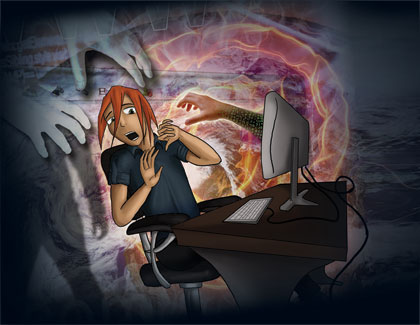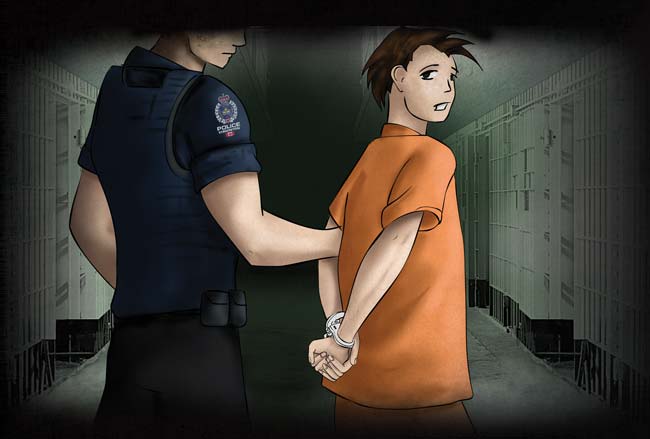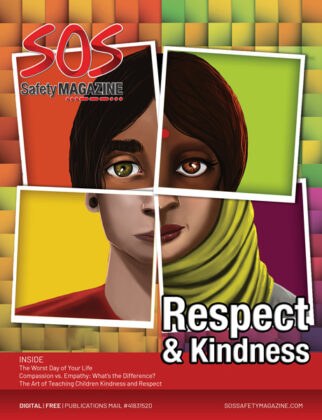INTERNET SAFETY. FACTS ABOUT CYBER BULLYING
Cyber Bullying: What is it?

What is cyber bullying? Does it happen everywhere? To everyone, or just me?
How will I know if I’m being cyber bullied? What can I do about it?
 Cyber bulling is a form of bullying that has developed as technology has expanded. It is an electronic message that is sent or posted by someone and is intended to frighten, embarrass, harass, or target another person.
Cyber bulling is a form of bullying that has developed as technology has expanded. It is an electronic message that is sent or posted by someone and is intended to frighten, embarrass, harass, or target another person.
What makes this form of bullying different from traditional bullying is that many times, the victim does not know who the sender is as the sender may be anonymous (i.e. made up screen names), however like traditional bullying, power and control are still the main issue.
These messages may be verbal, written, or even pictorial. Anyone can be cyber bullied – including adults.
Cyber bullying can happen through the internet, social networking sites (such as Facebook, MySpace), websites, email, text messaging, instant messaging (MSN, Yahoo messenger) and even online games (such as the WII, PlayStation 3, Xbox).
Examples of cyber bullying include:
- sending mean or threatening messages/images,
- posting sensitive or private information about another person,
- posting embarrassing pictures of someone else,
- pretending to be someone else in order to make that person look bad,
- tricking someone into revealing personal or embarrassing information and sending it to others, or even intentionally excluding someone from an online group or game.
There are a few differences when it comes to comparing cyber bullying to traditional bullying.
Cyber bullying lacks the face to face context that traditional bullying exemplifies. Without the social context, cyber bullying may be more severe since the other person’s emotional response will not be read. A general guideline to go by is if you cannot say something to someone in person; why would you say it to them in any other way? Another major difference is that cyber bullying can be presented at a remarkable speed to hundreds of people at once.
For example once something is on the internet, it is always on the internet as it is accessible to everyone as the internet is not a private place. Even something as simple as playing an online game on the Xbox (especially when headsets or instant messaging is involved) there is a lack of social interaction with the face to face context which may result in things being said that would not be said on an everyday basis. Cyber bullying has no boundaries, it is everywhere technology is present and it can happen anytime (day or night). This is drastically different from traditional bullying where once you got home, you were safe. The largest difference is that it can be anonymous which makes it difficult (and sometimes impossible) to trace where it came from.
Some signs of cyber bullying may include:
- being reluctant to go online, use cellphones, or even play online games; avoid discussions as to what you are doing online;
- depression, mood swings, changes in eating habits;
- aloofness or a general disinterest in school and activities;
- or quickly closing the browser or turning off the cell phone when a parent enters a room.
If you are a victim of cyber bulling there are ways to protect yourself.
It is important to remember not to reply to the messages from the bully and if possible block them. If you are playing an online game, leave the game immediately. If messages are sent to your email keep a copy of them and send them to your internet provider (i.e. Hotmail, Yahoo). The majority of these services have policies in place about harassment on their server. You do not have to read the messages but you may need a copy in the future if you decide to report the bullying.
Tell someone about it – such as a parent, teacher, police officer, or an adult you trust. If the bullying involves physical threats, alert the police. If the messages are on websites, contact the service provider as most have policies and guidelines for users and actions that can be taken when the guidelines/agreements are not followed. Many websites also have a link on the bottom where you can report inappropriate content.
When it comes to cyber bullying and the law, it may be classified under either civil or criminal law.
As civil law deals with property rights, personal dignity, and freedom from injury, there are also approaches to cyber bullying such as defamation. According to civil law, defamation is defined as communicating a false statement that does not have to be in words (i.e. an image, movie, etc) that will do harm to the reputation of another person. It must have a clear and obvious target and be accessible to one or more people besides the person making the statement and the target.
Within the Criminal Code of Canada under section 264 (2) (B) it is a crime to repeatedly communicate with someone either directly or indirectly if this communication causes them to fear for their own safety or the safety of others. This is harassment. Under criminal law, cyber bullying may be classified as criminal harassment. Even if the intention is not to frighten someone, it can be still be labelled as harassment if the victim feels threatened. Criminal harassment may be punishable up to 10 years in prison.

Many times criminal and civil law are not addressed with cyber bullying but it is important to understand that something that may seem harmless when playing an online game, or you think you will never be caught sending these emails or texts to someone you may be angry at for whatever reason, that it can be against the law.
When cyber bullying goes to the extreme and involves the law it can be damaging to both the victim and the perpetrator. The victim by emotional distress, depression, and a hard time with things they were once interested in along with numerous other problems that may develop. The perpetrator may be damaged by a possible criminal record that can stick with you for many years, beginning at a young age and may limit what you can do later on.







